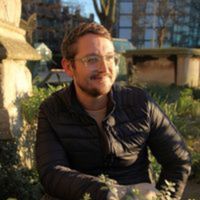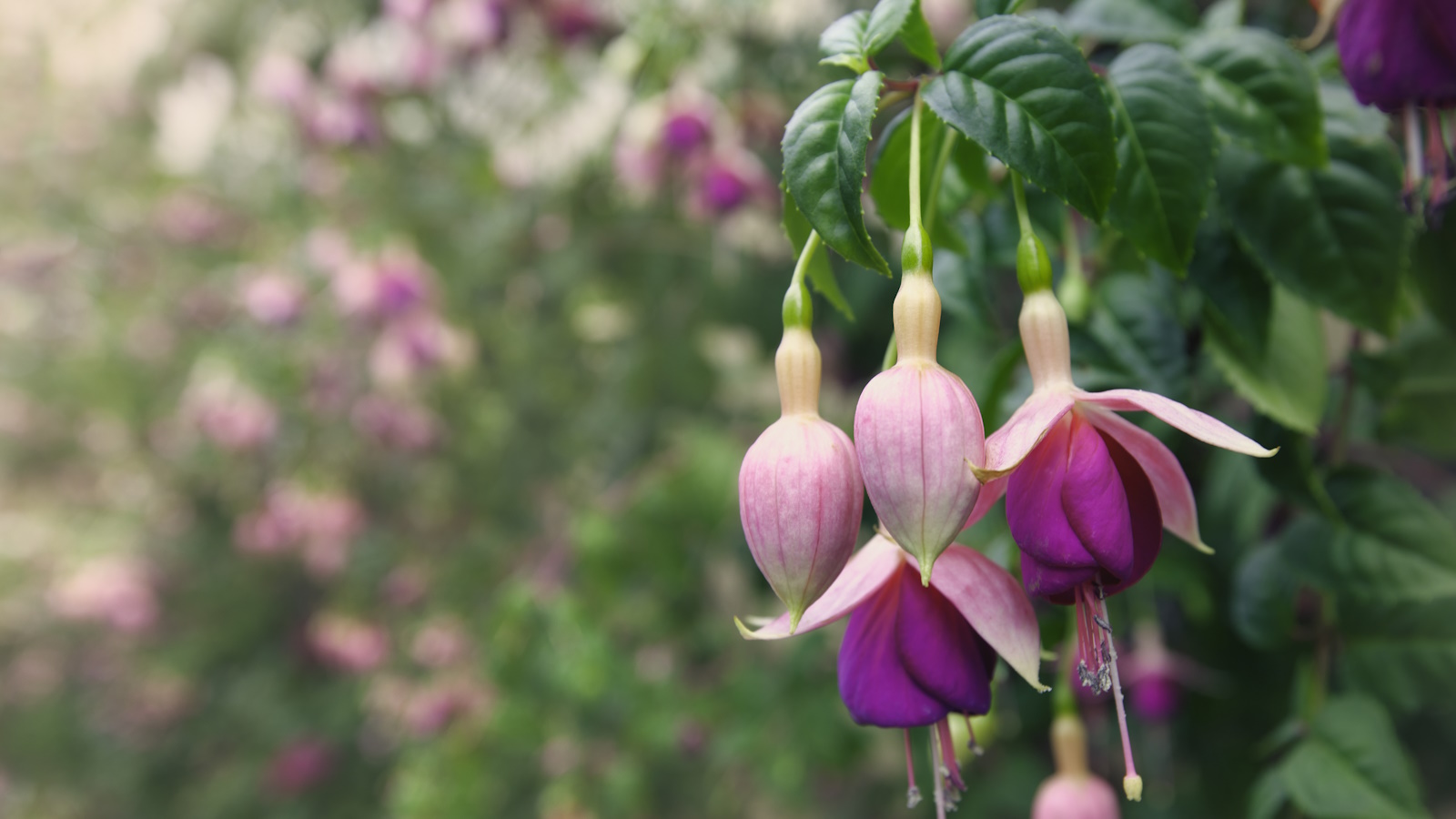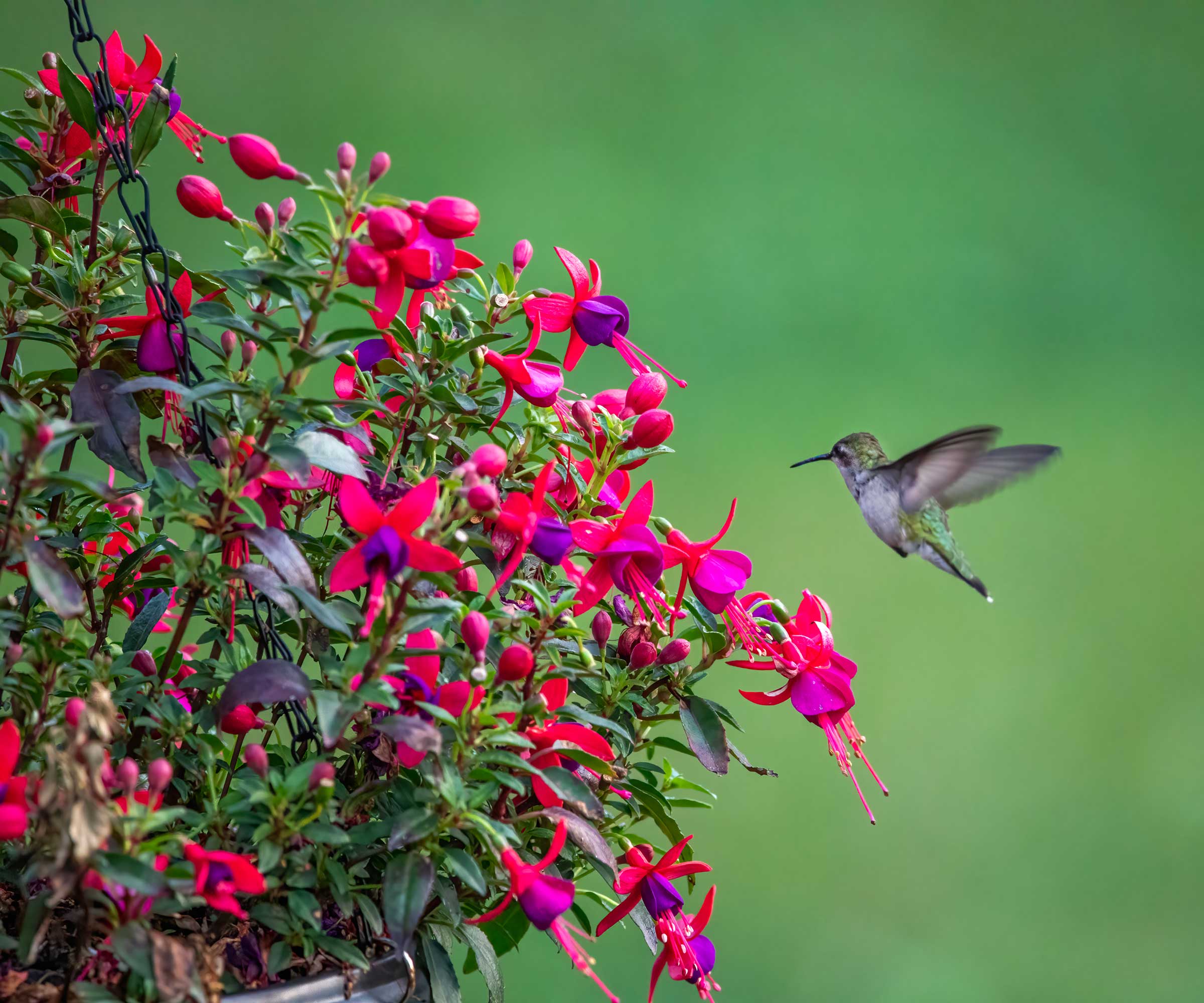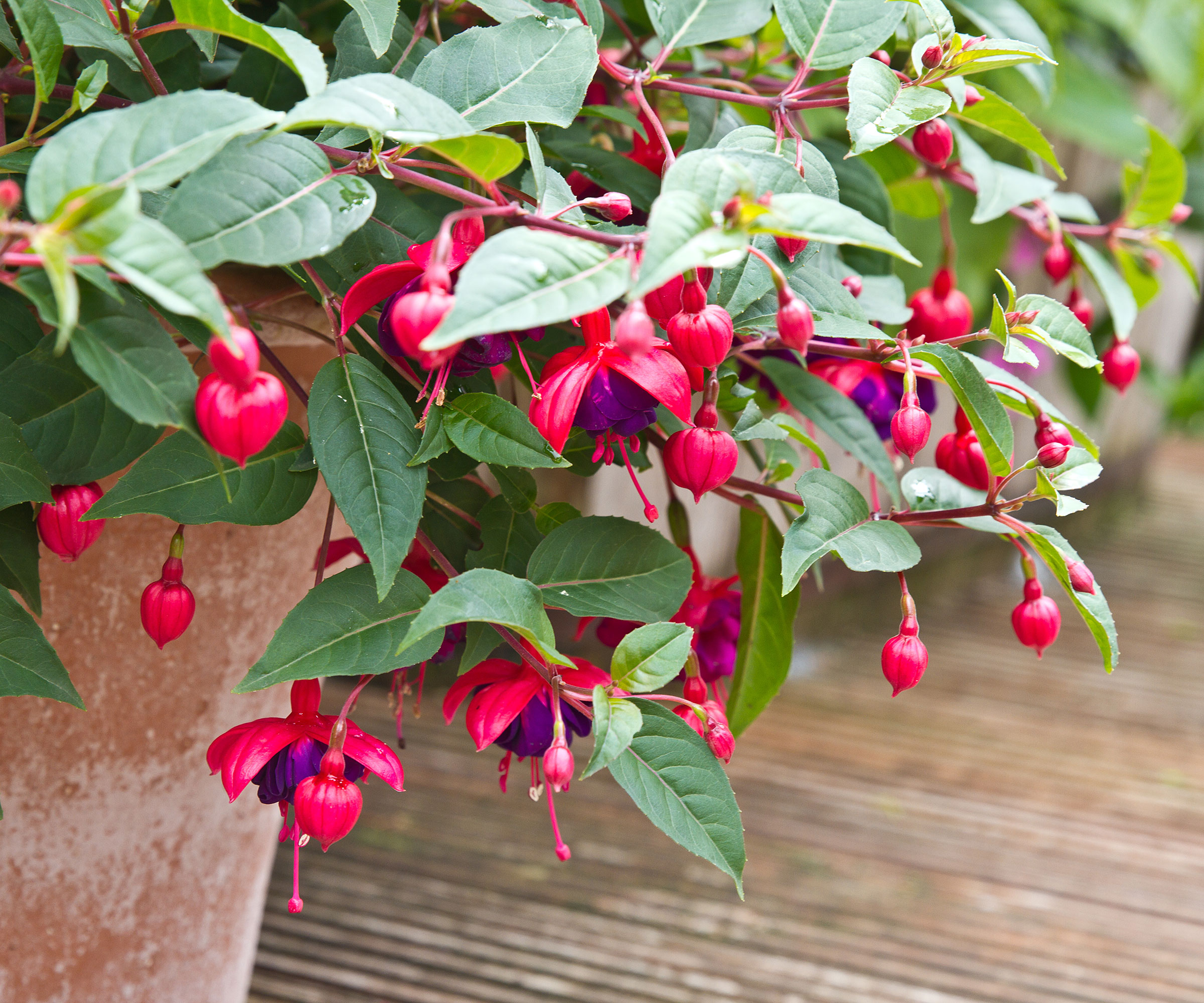Do you need to fertilize fuchsias? An expert gardener reveals the best way to care for these vibrant plants
Knowing how to fertilize fuchsias and the best products to use will keep your plants healthy


Fuchsias are colorful additions to any outside space. Renowned for their trumpet-like blooms that can be found in combinations of red, pink, purple and white, fuchsias are sure to add impact wherever they are planted.
Learning how to fertilize fuchsias is an important part of caring for them. As gardeners, we all want to see our shrubs and perennials thrive, and knowing when - and when not - to fertilize plants is crucial to their success.
So, whether you grow fuchsias in pots, hanging baskets, or in your borders, knowing the right fertilizing approach can go a long way to ensuring your plants are healthy, happy and producing masses of brilliant blooms. Here, one expert gardener offers practical advice on how best to care for your fuchsias during the growing season.

How to fertilize fuchsias
If you are looking for long-flowering shrubs for your garden borders or vibrant plants for your patio pots, fuchsias should be at the top of your wish list. Native to Central and South America, there are both tender and hardy varieties, meaning that whatever US hardiness zone you reside in, there will be a fuchsia species for you. When considering how to care for fuchsias, these plants are remarkably easy to grow, but knowing how to feed your fuchsias is crucial to plant success.
When to fertilize fuchsias

'Fuchsias are hungry plants that require feeding during the spring and summer,' says plant expert, Katie Sunderlage. Whether grown in borders, hanging baskets or containers, it is important to regularly feed for the best results.'
Fuchsias are 'greedy feeders,' Katie adds, 'so regular fertilizing is necessary to keep them healthy throughout the season.'
If you are ever unsure about soil health in your yard, I would recommend using a soil test kit, available from Amazon, which will quickly reveal if there are any deficiencies you should be aware of when caring for your fuchsia plants.
Design expertise in your inbox – from inspiring decorating ideas and beautiful celebrity homes to practical gardening advice and shopping round-ups.
'Feeding should stop towards the end of summer,' Katie says, 'before your plants enter their dormant stage. Remember that fertilizing too late in the summer will do more harm than good.'
While this will vary depending on your location, generally, fuchsia feeding times are from April until September, and feeding any later than this can harm your plants.

Operations Manager at Holland Group, managing the customer service department and purchasing. Katie has been in the green industry since 2005 in the Greater Milwaukee area, earning her degree in Horticulture in 2008. She has been able to share her love for plants working in multiple garden centers, in sales positions and most recently in an online retail platform at Holland Group.
How to fertilize fuchsias

Fuchsias are long-flowering and can bloom for many months, making them an ideal choice for gardens, patios or even balconies. As Katie says, fuchsias are greedy plants, so applying fertilizer during spring and summer can help prolong the floral show.
'I recommend using a diluted liquid fertilizer that is well balanced,' Katie says. There are many products available, such as this organic fertilizer by Dr. Earth, available from Walmart.
'Applying feed every two to three weeks is best, particularly for your pots and hanging baskets.' Remember that plants grown in pots are reliant on you for nutrients, so adding feeding to your summer gardening checklist is important.
'Bloom booster fertilizers will encourage extra flowers,' Katie says. 'Look out for feeds high in phosphorus and potassium, such as tomato fertilizers or products with fish emulsion,' Katie adds. Tomato feeds are available online from Amazon, and fish emulsion fertilizers are available from Walmart.
'Always make sure you follow the directions when using any fertilizer,' Katie adds, 'being careful to dilute as required by abiding by the instructions found on the packaging.'
Finally, for fuchsias grown in your borders, it is a good idea to apply mulch in the fall. Using a good quality product, such as this Miracle-Gro organic mulch, available from Amazon, can help to feed your soil and improve the health of your plants for the coming year. While you can apply mulch at any time of year, I find it best to do so in November or December, when you have cut back your perennials and shrubs. This will also help to suppress weeds during the winter and spring.
FAQs
Can I make my own fertilizer to use on my fuchsia plants?
Yes, making your own fuchsia feed is a sustainable option for fertilizing plants at home. See our guide on how to make your own tomato fertilizer, which contains many recipes, including nettle and comfrey tea, both of which can feed your fuchsia plants and encourage foliage and root growth.
Feeding fuchsias that are grown in borders, pots and hanging baskets is important during the spring and summer, and by following our guide you can ensure that your plants thrive this year. One common fertilizing mistake to be aware of is overfeeding or feeding when it is not necessary. So, I would advise sticking to a fertilizing schedule and always using slightly less of your feed than the packaging recommends.

Thomas is a Content Editor within the Gardens Team at Homes and Gardens. He has worked as a professional gardener for both public spaces and private estates, specializing in productive gardening, growing food and flowers. Trained in Horticulture at the Garden Museum, he has written on gardening and garden history for various publications, including The English Garden, Gardens Illustrated, Hortus, The London Gardener and Bloom. He has co-authored a Lonely Planet travel book, The Tree Atlas, due out in 2024.

